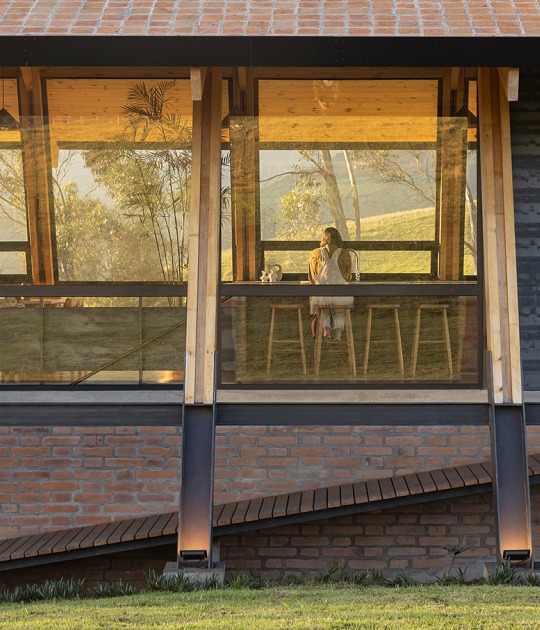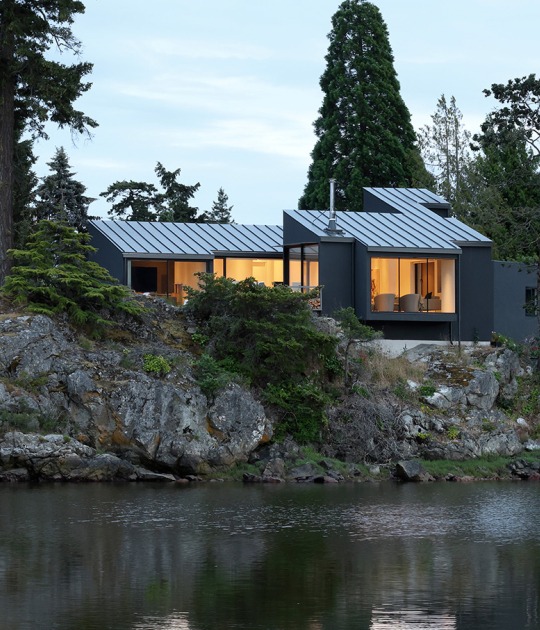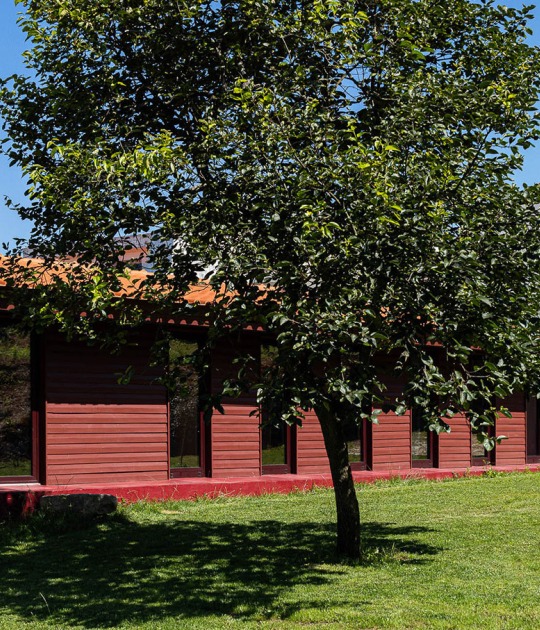The garden seems to adhere to the house in such a way that the interior and exterior could be part of the same room if the user so wishes. The interior design seeks to be flexible and, just as it complements the natural aesthetics, it also relies on the lighting possibilities thanks to the orientation. The building, which seems to be part of the plant network, makes of itself a house hidden from the eyes of others.
Description of project by TANK Architectes
The Mouvaux house is a family home. Nestled on the edge of wooded land, its subtle shapes and materials reflect the surrounding flora. Opening onto a clearing where it receives sunlight from the south, the house’s orientation is ideal, allowing it to benefit from natural light all day long.
There is a marked duality at work between the ground floor and garden, and the first floor, between the abstraction of the reflections created by the large sections of glazing and brushed aluminium and the weight of the roof, which boasts living space. The play of full and empty volumes that accompanies this duality is complex. The roof is a wooden shell hollowed out and intermittently punctured to allow sunlight to radiate in, and offering views of the garden and the trees.
Every window is singular and creates a unique spatial experience. On the ground floor, opaque blocks structure the volumes, generating, by contrast, transparencies, living spaces and sweeping views towards the garden. The line of sight between ground and sky has been engineered to explore all the potentials of verticality. The project seeks spatial wealth afforded by a roof that folds and a flooring that sometimes nestles into, sometimes hovers above the garden. The garden seems to penetrate the interior. The hybrid masses (built-in furniture, load-bearing walls, the library, etc.) offer domesticity to spaces that can be typified and decorated while opening themselves up to nature.
The choice of materials, and in particular that of wood, is not only guided by our commitment to sustainable architecture (the wood comes from local and renewable sources) but also by the capacity of wood to make light vibrate and to be malleable on every scale. From the framework right down to furniture and interior storage designs, wood guides the project, giving the overall structure a harmonious appearance.
The parti pris to reveal and strengthen the presence of the roofing and to allow the ground floor to "disappear" under the overhanging roof, the reflections of the landscape in the "facets", the offsets embedded in the plan, all combine to support the notion of a “furtive” house. The plan bends itself so as to slide this large inhabited roof between the trees within a setting full of vegetation. The delicate play of light and the shifting atmospheres of the reflected surroundings intensify further the experience of nature. A house that “slips into” nature.













































